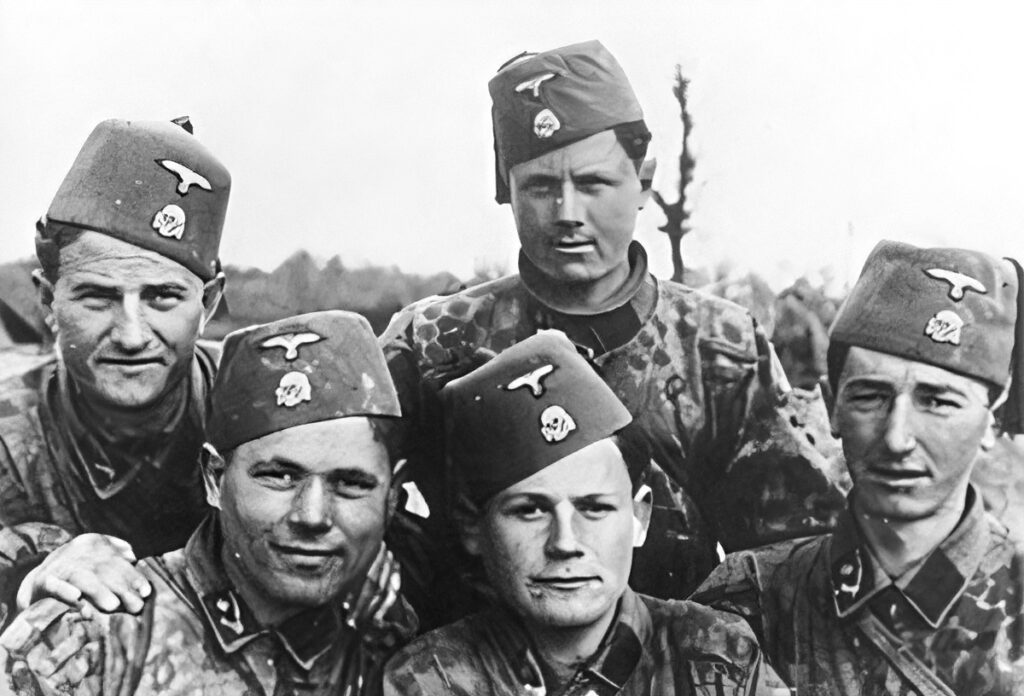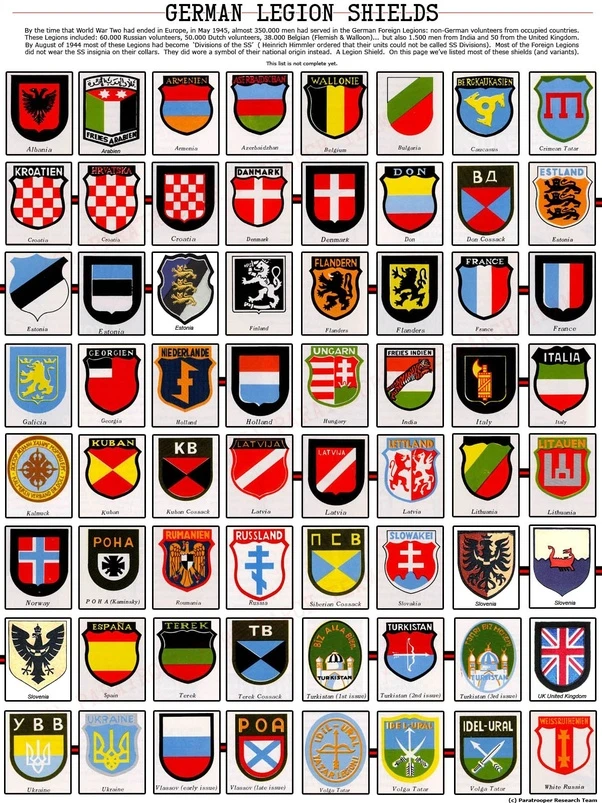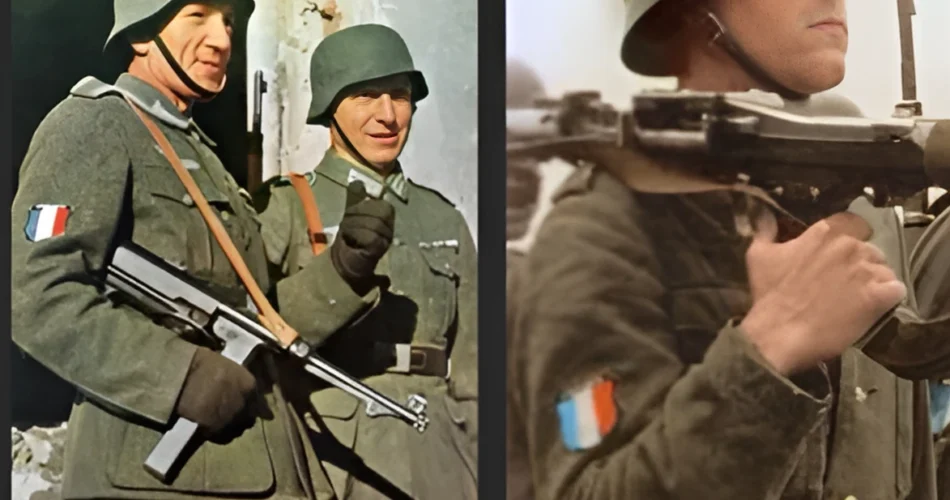During World War II, the Waffen SS, an elite military branch of the Nazi Party’s SS organization, engaged in a widespread recruitment campaign that extended beyond the German borders to enlist non-German volunteers and conscripts from across Europe, particularly from Eastern and Central Europe. These recruits included hundreds of thousands from regions traditionally viewed with disdain within the Nazi racial hierarchy. Many of these men joined the Waffen SS driven by a mix of ideological indoctrination, coercion, and the desperate situation in their homelands, which were threatened by Soviet advances.
Fast Track:
TL;DR
The appeal to these volunteers often centered on anti-Bolshevism and the promise of national liberation. For instance, many Eastern Europeans were motivated by the hope of securing independence from Soviet control or from their perceived lesser status under the Nazi regime. However, as the war dragged on and German defeats accumulated, the initial promises made by the Nazis increasingly rang hollow. The harsh reality set in that Nazi Germany was using these foreign fighters as cannon fodder while continuing to treat their homelands with oppressive brutality.

By late 1944 and 1945, the dire situation led many of these foreign SS units to contemplate retreat to the West, hoping to surrender to Western Allies rather than face the advancing Red Army. Their motivations were a complex blend of disillusionment with the Nazi cause, fear of Soviet retribution, and a continued desire to find some path to national self-determination, even at the war’s end.
During this period, SS chief Heinrich Himmler began to further loosen the Nazi racial policies to recruit from ethnic groups previously considered “non-Aryan.” This pragmatic shift was exemplified by the incorporation of diverse groups such as the Bosniaks, Ukrainians, and even Russians into the Waffen SS. The desperation for manpower led to the formation of divisions like the 13th Waffen Mountain Division of the SS “Handschar” which was primarily composed of Bosniaks, and the 14th Waffen Grenadier Division of the SS, known as the Galician Division, made up mostly of Ukrainians.
These foreign SS divisions were involved in numerous atrocities. The Galician Division, for example, participated in the massacre of Polish civilians in villages such as Huta Pieniacka, where they killed hundreds of mostly unarmed people. Such actions were part of broader, brutal anti-partisan operations that often targeted civilian populations under the guise of military necessity.

As the war neared its end, the crumbling of the Nazi war machine led to varied fates for these foreign fighters. Some divisions, such as the French Charlemagne Division and the Latvian SS divisions, continued to fight for the Nazis, retreating into Germany and participating in the final defense of Berlin. Others, like the remnants of the Galician and various Russian volunteer units, attempted to surrender to Western forces to avoid repatriation to the Soviet Union, where grim fates awaited them.
The legacy of the foreign volunteers of the Waffen SS is controversial and painful. While many were initially driven by a mix of ideological fervor and nationalistic aspirations, their service ultimately supported the broader goals of the Nazi regime, including its genocidal policies. Their story is a cautionary tale of the moral and ethical corruption inherent in aligning with oppressive regimes and the tragic outcomes of such alliances. As the Third Reich collapsed, these men found themselves complicit in atrocities and war crimes, often with devastating personal consequences during and after the war.
TL;DR
- 🌍 Diverse Recruitment: By the later stages of the war, nearly half a million non-German fighters served in the Waffen SS. This included significant numbers from Eastern and Central Europe, as well as volunteers from regions like the Balkans and the Baltics. Recruitment was driven by a mix of coercion and voluntary enlistment, fueled by various personal and nationalist motivations.
- 🤝 Shifting Ideologies: Heinrich Himmler, in charge of SS recruitment, strategically adjusted Nazi racial ideologies to justify the inclusion of these diverse groups. For instance, Bosniaks were considered partly Aryan due to supposed Persian blood, and Ukrainians were rebranded as Galicians, allegedly Germanized under the Austrian Empire.
- 🏰 Galician Division’s Struggles: The Galician Division, composed primarily of Ukrainians, faced intense conflicts and high casualty rates, particularly in battles like the Brody pocket. The division’s identity and purpose were contentious, with many soldiers maintaining hopes for a future Ukrainian independence, contrary to their role within the SS.
- 🛡️ Russian Fighters and the RONA: The Russian Liberation Army (RONA) led by Bronislav Kaminski, included ethnic Russians who engaged in brutal anti-partisan activities. Their notorious actions during the Warsaw Uprising underscored the extreme violence and disorder within these units, eventually leading to Kaminski’s execution by the Germans.
- 📉 Endgame Dynamics: As the war neared its end, these foreign units faced disintegration and defection. Many fighters sought to surrender to Western allies to avoid retribution from the Soviet Union. The complexities of their involvement with the Nazi regime left many of these individuals in precarious post-war situations, often branded as collaborators.
The involvement of French and Russian fighters in defending the Reich represents a dark chapter in the history of World War II, reflecting the desperation of the Nazi regime and the varied motivations of the individuals involved. Their story is a stark reminder of the war’s far-reaching impacts on personal, national, and racial identities.
